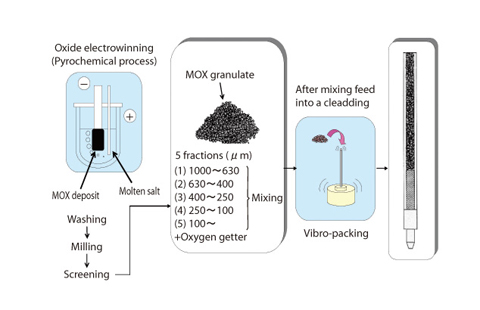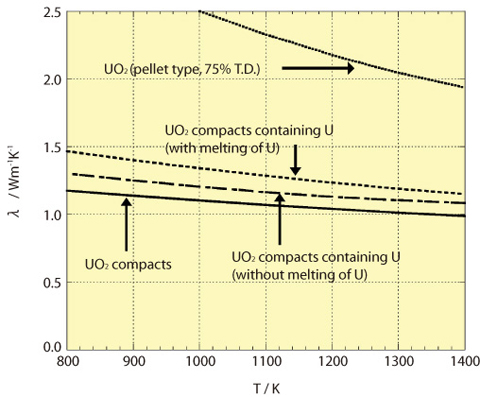
Fig.11-6 Outline of MOX vipac fuel production in RIAR

Fig.11-7 Improvement of thermal conductivity by U particles
There is weapons plutonium (W-Pu) remaining in dismantled nuclear weapons on the scale of several tens of tons through disarmament process in the US and Russia. In order to dispose of W-Pu, burning in reactors and immobilization, specifically in deep geologic repositories covered with high-level vitrified waste, are feasible; burning appears promising at the present.
Burning W-Pu in a light water reactor as MOX fuel is a proven technology. However, since Russia has no industrial scale MOX pellet fuel fabrication facility and no burning experience in LWR, a huge cost is necessary to introduce related technology from western countries.
Through several collaborative studies with Russian institutes, we have established the technical feasibility of a BN600 vipac fuel option, in which MOX fuel fabricated using Russian vipac fuel technology (Fig.11-6) is burned in a Russian fast reactor (BN600). Although this method has no solid past results and was held in doubt at first, thanks to the above studies it is one of the methods for disposition in the scenario adopted by G8 at present. It has lower disposition cost because of the compact facility and simple fuel fabrication process, and requires less troublesome technology transfer due to use of domestic technology.
In order to confirm the technology to convert BN600 into a hybrid core (23% is replaced by MOX fuel), the following studies were carried out in collaboration with Russia on essential technology; (1) Criticality test of simulated hybrid core, (2) 3LTAs (Leading Test Assemblies) irradiation test, (3) Core and fuel design, (4) Safety analysis, (5) Modernization of vipac fuel fabrication facility. All of above studies except (5) have been finished, and the technical preparation for conversion to hybrid core is completed.
In the 3LTAs irradiation test, MOX fuels were fabricated with W-Pu dismantled from nuclear weapons and burned in BN600, and given a post irradiation test in a hot laboratory. The test revealed that the Vipac fuel has similarity to pellet fuel in irradiation characteristics, fuel irradiation stability, and FCCI/FCMI (fuel-cladding chemical/mechanical interaction) feature. Additionally, examinations of thermal characteristics of vipac fuel pin were carried out by out-of-core experiments. It was confirmed that the addition of oxygen getter, which is metallic U in a granulate form unique to vipac fuel, causes a 10% improvement in thermal conductivity (Fig.11-7). These results will be adopted to make a calculation model to evaluate irradiation behavior of vipac fuel.
The disposition plan for the 34 tons of Russian surplus W-Pu, which is being conducted by G8 with international assistance, faces several problems and cannot move forward now. However, there is movement to proceed with the BN600 vipac fuel option as the leading disposition method at the initiative of US and Russia. Attention should be paid to future trends.